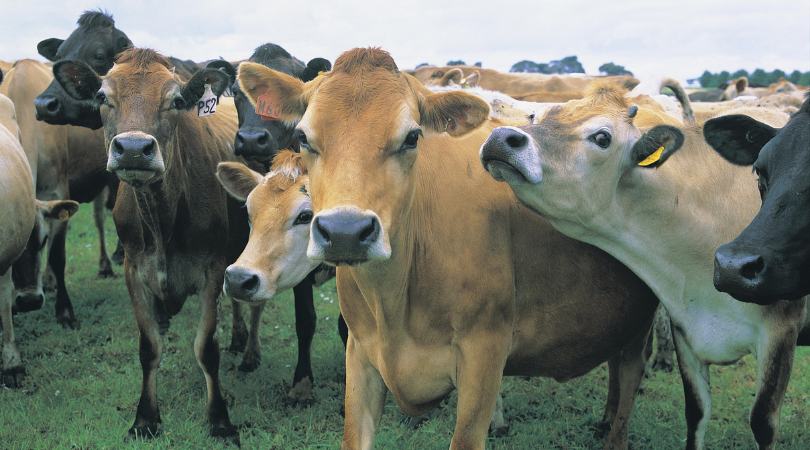- Too short a recovery period – When turning into a pasture ask, “Has this pasture recovered from the previous stress (grazing, fire, grasshoppers etc.)?” If not, then you need to lengthen recovery. It is possible for recovery periods to be too long, but too short is more common to see.
- Too long of a graze period – If grazing animals are regrazing individual plants in a pasture, or if animal performance is disappointing, then graze periods are too long. Not everyone needs super short graze periods, but graze periods of longer than 30 days during the growing season are almost certainly causing regrazing of individual plants.
- Not matching stocking rate to carrying capacity – Match supply (carrying capacity) and demand (stocking rate). Most ranchers are in love with breeding stock and reluctant to destock in times of lower forage supply. If we are going to run classes of animals that we are emotionally unwilling to part with and we ranch in climates that experience fluctuations in forage production, then we need a mix of static and flex herds to match stocking rate and carrying capacity. Most would consider breeding herds a static herd (they don’t have to be) and a flex herd could be stockers, short term cows, custom grazing clients, etc.
- Too many herds – Number of paddocks per herd is a critical factor in determining your ability to manage grazing. There are two ways to bring this number up. Build more paddocks, or reduce the number of herds. Reducing herds is usually the best place to start. This often requires some money spent on improving the ability to water a larger number of animals.
- Stock density too low – If you have undergrazing and overgrazing happening in the same pasture your stock density is likely too low. Stock density is the number of animals on an acre at a specific instant in time. Increasing stock density is the quickest way to improve uniformity of grazing and build soil health.
- Poor stockmanship –If you asked 10 ranchers to rank their stockmanship abilities from 1 (terrible) to 10 (best stockman ever) there would be a lot of 7’s through 9’s and the best stockmen would likely give themselves a 6. We all have room to improve in this area.
The first path in preventing these mistakes is to recognize them as mistakes. Many of your neighbors don’t even consider critical principles in grazing management such as recovery period, graze period, stock density or others. They are solely focused on stocking rate, when stocking rate is only one element of grazing management. At the Ranching for Profit School we teach the 5 Grazing Principles which work in every environment. The mistakes listed above occur when managers don’t follow the grazing principles.




Excellent advice Dallas. Thank you for this concise overview.
Thanks Dallas.
I thought it was interesting that you included high-skill stockmanship as a necessity for good grazing. This is a little-understood connection, at least in my neighborhood. I recently had a chat with a fellow who had placed some growing stock on a nearby ranch. Driving past that operation, it was clear that the cattle needed to be moved to fresh feed. After three days of phone calls, the landowner finally called back, expressing frustration.
“What do you want from me? I’m trying my best to get them moved! I had 5 guys out there yesterday and they just won’t leave that pasture!”
Clearly, it makes little difference how much technical grazing knowledge a person has if they don’t understand basic stockmanship. I think many of the other issues you wrote about are more…mathematical…and therefore more simple than the deep consciousness required to efficiently/effectively move cattle.
This is an interesting point. I used to work on a large feedlot and the owners hired a stockman-ship instructor to help the cowboys handle stock. We got a wild load of cattle in shortly after, so I wanted to see if it worked. I went over the steps laid out to handle them. They calmed down after a short time. I then sorted one off while I was on foot and had him stay in a corner by himself on the opposite end of the main herd. I then crawled over the fence not disturbing the herd or the single. I watched them for about 1/2 hour and the single stayed by himself in the corner on his own accord. I was floored and obviously a believer since then. I would have rated myself high on the stockman scale before that, but it turns out I didn’t know a thing until that moment.
Great reminders. I’ve certainly run into 1-5 as I’ve tried to implement and improve the grazing. I’ve probably unknowingly run into #6 as well, but could you give an example of poor stockmaniship being a grazing mistake? For my neighbors, of course…I’ve got to be a 9 or 10 at animal handling 😉
I love this question! As a solid 4 on the stockmanship scale I’ve seen some pretty excited animals cause some pretty amazing and beneficial disturbance in our semi-arid, tight soiled environment. Perhaps that same disturbance could be devastating on loose, wet soils? Maybe proper stockmanship depends more on the environment and ecological goals of the individual than on a particular styling of animal handling?